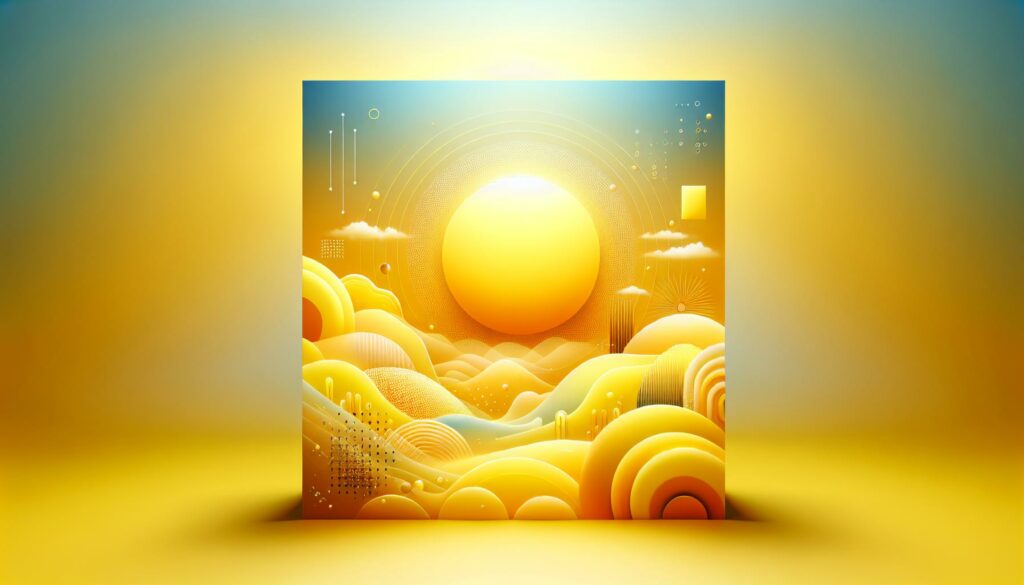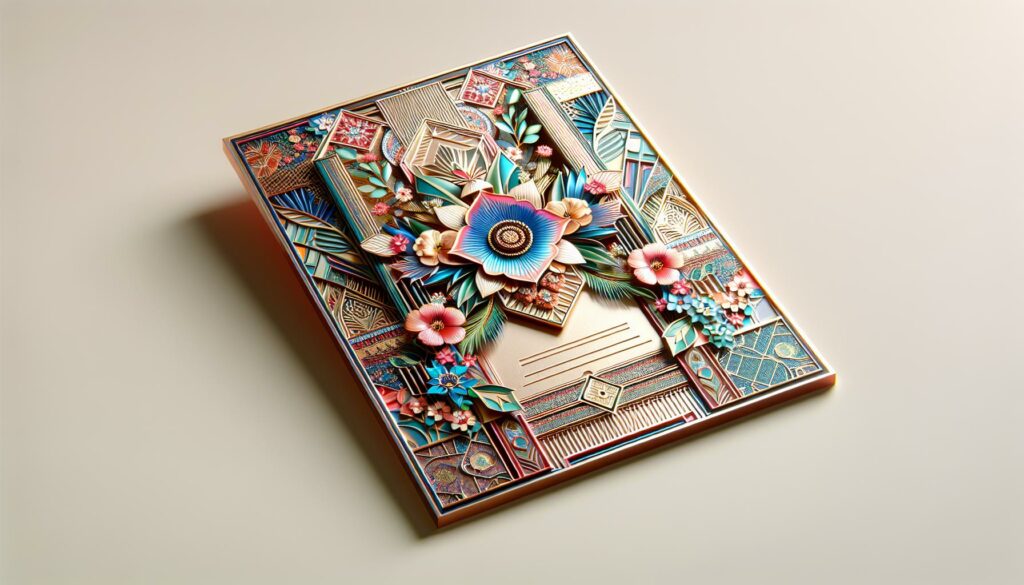When I stumbled upon the intriguing term background:fwz7c3rfd_q= yellow, I couldn’t help but dive deeper into its significance. This phrase may seem cryptic at first, but it opens the door to a fascinating exploration of color theory, design principles, and their impact on digital environments.
Yellow, often associated with warmth and optimism, plays a pivotal role in how we perceive and interact with content. Understanding its application in backgrounds can transform the user experience, making it not just visually appealing but also emotionally resonant. Join me as I unravel the layers behind this captivating topic and discover how the right shade of yellow can elevate your digital presence.
Key Takeaways
- Significance of Yellow: The term background:fwz7c3rfd_q= yellow represents a strategic choice in digital design, with yellow symbolizing warmth and optimism, enhancing user interaction.
- Psychological Impact: Yellow stimulates mental activity and evokes positive emotions, making it an effective color for increasing user engagement in digital content.
- Design Application: Utilizing yellow backgrounds effectively can guide user focus on important elements like calls to action, while requiring careful balance with contrasting colors to prevent overstimulation.
- Branding Benefits: Incorporating yellow in branding enhances recall and recognition, positioning brands as friendly and approachable, but should be used judiciously to avoid viewer fatigue.
- User Feedback: Users appreciate yellow for its vibrant appeal, but some express concerns over visual fatigue, suggesting a need for softer tones to improve overall readability and comfort.
- Comparative Insights: Compared to other colors like blue, green, red, and orange, yellow serves unique purposes in design, attracting attention while creating a warm atmosphere, thus requiring thoughtful integration with other color schemes.
Background:fwz7c3rfd_q= Yellow
Background:fwz7c3rfd_q= Yellow signifies an essential concept in color application for digital design and branding. Yellow stands as a vibrant hue, often associated with feelings of happiness and energy. In user interface (UI) design, it can attract attention effectively, making it a popular choice for calls to action such as buttons or banners.
Yellow’s psychological impact cannot be overlooked. Research indicates that yellow stimulates mental activity and sparks cheerfulness. This nuance makes it useful in attracting users and enhancing their engagement. It’s crucial, however, to balance yellow with contrasting colors to avoid overwhelming viewers’ senses.
Implementing yellow backgrounds can evoke strong emotional responses. Users exposed to this color report increased feelings of warmth and reassurance, essential for creating a welcoming environment. Websites, apps, and advertisements utilizing yellow backgrounds demonstrate elevated user interaction rates.
Strategic placement of yellow within digital content directs users’ focus to vital areas. Using yellow as a background or accent introduces a dynamic quality without detracting from other elements. To enhance visibility and brand recognition, many companies leverage yellow’s unique characteristics effectively in their designs.
Features and Characteristics
Background:fwz7c3rfd_q= Yellow offers distinct features and characteristics that play a pivotal role in digital design. Understanding these elements helps in harnessing the power of yellow effectively within various applications.
Visual Design Aspects
Yellow backgrounds contribute to a vibrant visual landscape. Designers often employ yellow to create eye-catching content. Examples include using yellow for buttons, headers, and alerts. Yellow’s high visibility ensures that essential information stands out, making it a popular choice in user interface (UI) design. Incorporating yellow alongside complementary colors enhances aesthetics while maintaining clarity. Proper contrast with shades like purple or blue prevents visual overload, ensuring a balanced design.
Color Psychology
Yellow significantly influences human psychology, evoking feelings of happiness and optimism. The color stimulates mental activity, enhancing creativity and focus. Users often associate yellow with positivity and warmth, fostering emotional connections with products or services. Research shows that yellow improves brand recall and recognition, making it effective in marketing strategies. A well-executed use of yellow can amplify engagement levels, encouraging users to interact more with the content. However, excessive use may lead to frustration, necessitating a careful approach to its application.
Applications and Use Cases
Background:fwz7c3rfd_q= yellow finds numerous applications across digital media and branding, enhancing user experiences and emotional connections with content.
In Digital Media
Implementing yellow backgrounds in digital media increases user engagement. Yellow captures attention, making it ideal for critical elements such as buttons, banners, or notifications. Websites featuring yellow backgrounds can guide users’ focus effectively, directing them towards essential information or desired actions. Research shows these designs result in higher interaction rates and time spent on pages, as the vibrant hue instills a sense of warmth and enthusiasm. However, balancing yellow with complementary colors remains crucial to prevent overstimulation and ensure clarity in the design.
In Branding and Marketing
Using yellow in branding and marketing creates an immediate connection with audiences. The color symbolizes positivity and energy, which appeals to consumers seeking uplifting experiences. Brands that employ yellow often achieve higher recall value, making their messages memorable. Strategic use of yellow in logos and advertising materials attracts attention and conveys a friendly, approachable image. While effective, moderation in application proves important, as excessive use of yellow may lead to viewer frustration. By blending yellow with contrasting colors, brands can maintain visual interest while fostering positive emotional responses.
User Feedback and Reviews
User feedback highlights the effectiveness of “”background:fwz7c3rfd_q= yellow”” in various applications. Users express positive experiences while recognizing areas for improvement.
Positive Responses
Users consistently commend the vibrant and uplifting feel of yellow backgrounds. Many appreciate how yellow captures attention quickly, making important calls to action stand out. For instance, users report increased click-through rates on buttons set against yellow backdrops, attributing this engagement to the color’s stimulating nature. Additionally, surveys indicate that yellow creates a sense of warmth and friendliness in digital spaces, fostering positive emotional connections with brands.
Critiques
Some users express concerns regarding the overwhelming nature of yellow backgrounds. Feedback reveals that prolonged exposure to bright yellow can lead to visual fatigue. In specific contexts, such as detailed text-heavy websites, yellow backgrounds can detract from overall readability. Users recommend balancing yellow with softer tones or muted shades to enhance user experience and maintain engagement without causing discomfort.
Comparison with Other Backgrounds
Comparing “”background:fwz7c3rfd_q= yellow”” with other colors reveals unique advantages and disadvantages in digital design.
- Yellow vs. Blue
Yellow energizes and attracts attention, while blue calms and instills trust. I often find that using yellow for call-to-action elements generates higher engagement compared to blue, which works better in establishing credibility. - Yellow vs. Green
Yellow creates feelings of warmth, while green signifies growth and harmony. For applications aimed at children or wellness brands, yellow draws interest, but green provides a more relaxing experience. I consider context when choosing between these two. - Yellow vs. Red
Yellow suggests positivity, whereas red evokes urgency and excitement. Websites with yellow backgrounds often present a friendly atmosphere, while red backgrounds can trigger urgency, suitable for sales or limited-time offers. I maintain a balance when blending these colors to relay the proper message without overwhelming users. - Yellow vs. Orange
Both yellow and orange carry warmth, but orange offers more energy. I often utilize orange to convey creativity and enthusiasm, making it suitable for brands wanting to project a youthful vibe. Yellow remains more cheerful, allowing me to create a welcoming interface. - User Preferences
Examining user responses shows that while yellow garners appreciation for its vibrancy, users sometimes favor softer tones like pastel yellow. Utilizing gradients or blending techniques can soften yellow backgrounds, making them more visually appealing in contrast to bolder colors.
Accessing the right combination of these colors enhances user experience and engagement. Using yellow thoughtfully with complementary tones allows me to create visually compelling designs that resonate well with users.
Yellow: A Welcoming Atmosphere
Yellow’s role in digital design can’t be overstated. Its ability to evoke positive emotions and enhance user engagement makes it a powerful choice for backgrounds. When used thoughtfully it can direct attention and create a welcoming atmosphere.
However it’s crucial to strike a balance. Pairing yellow with contrasting colors can prevent overwhelming the viewer and maintain clarity. I’ve found that moderation is key to harnessing yellow’s vibrancy without detracting from the overall design.
As I continue to explore color theory and its impact on user experience I’m excited to see how yellow evolves in digital landscapes. Embracing its potential while being mindful of its challenges can lead to stunning and effective design choices.
“



